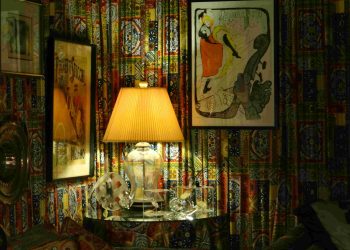Chic Chaos: Redefining Aesthetic Design in a Fragmented World

In a world increasingly defined by unpredictability and disruption, aesthetic design has a choice: cling to order or embrace chaos. Chic Chaos does not merely accept the mess; it transforms it into an audacious identity.
Imagine walking into a space where shattered lines, abrupt color palettes, and asymmetric layouts come together in a harmonious rebellion. That is the promise of Chic Chaos—a world where disorder becomes the new elegance.
For years, my design philosophy gravitated toward symmetry and balance, ideals drilled into us by centuries of tradition. Yet, while working on a high-stakes interior design project for a rapidly evolving tech startup, I realized just how inadequate conventional aesthetics were in capturing the spirit of our era. The team wanted a space that communicated growth, agility, and creativity—all within the limited budget and unpredictable constraints of a newly rented post-industrial loft. A paradigm shift was inevitable.
The Myth of Perfect Order
Traditionally, design has adhered to stability and symmetry. The Bauhaus, the Renaissance, even modernist minimalism—all celebrated the idea of perfection through order. While these frameworks have produced iconic works, they are often poorly suited to reflect the complexities of today’s sociocultural landscape.
Look at our digital lives: browser tabs scattered like fallen leaves, playlists that juxtapose Bach with hip-hop, and homes where workspaces bleed into personal sanctuaries. Pretending our world exists in neat, linear pathways is no longer useful. Psychologists like Mihaly Csikszentmihalyi highlight the importance of “flow”—a state where creativity thrives not through rigidity but through dynamic interaction. In Chic Chaos, the unpredictability of design mirrors the richness of human experience itself.
The Cross-Disciplinary Case for Chic Chaos
Chic Chaos draws inspiration from multiple fields, blending the fluidity of nature with the responsiveness of technology and the tenacity of business agility.
-
Nature:
Consider the fractals of a snowflake or the imperfect symmetry of a tree branch. Biophilic design taps into these irregularities to create spaces that make us feel grounded. Chic Chaos furthers this, introducing organic unpredictability into texture, color, and structure. -
Technology:
Algorithmic design—where randomness is introduced intentionally—resonates deeply in fields like UX/UI design. Google’s homepage, while deceptively simple, thrives on a Chic Chaos philosophy: sleek on the surface, but unpredictably dynamic when you delve into personalized results. -
Business:
In the Agile business model, teams embrace iterative, nonlinear progress. Likewise, Chic Chaos demands that designers embrace flexibility, viewing constraints as opportunities for creative improvisation.
Predicting Future Trends
As our world becomes more interconnected yet fragmented, Chic Chaos may well become a cornerstone in design industries ranging from architecture to digital art. Imagine urban spaces designed not to impose order but to celebrate the community’s inherent energy. Picture user interfaces that disrupt expectations just enough to spark delight or curiosity.
Philosophers like Byung-Chul Han argue that modern societies are losing their ability to sit with contradiction. But Chic Chaos aims to reverse this trend, embracing dualities: precision and randomness, elegance and bravery, simplicity and complexity, in one cohesive vision.
Making Chic Chaos Work for You
If you’re intrigued by the philosophy of Chic Chaos, here are actionable steps to implement this mindset:
-
Start Small:
Apply asymmetry in your workspace layout or experiment with unexpected colors in your next digital project. -
Embrace Constraints:
View limitations as opportunities. For example, use leftover materials in a creative way to build an aesthetic that’s both unique and sustainable. -
Ask Questions:
Challenge existing norms in every project. Instead of asking, “What’s the ideal solution?” try asking, “What’s the boldest approach?” -
Learn From Others:
Study movements like Wabi-sabi in Japan, which celebrates imperfections, or look into the freeform artistry of African tribal patterns. -
Iterate Constantly:
Chic Chaos thrives on evolution. Don’t be afraid to revisit and revise your work iteratively over time.
The Personal and the Universal
Looking back, my own encounter with Chic Chaos was less about rejecting traditional design and more about injecting humanity into it. By allowing room for disorder, I didn’t just mirror the world around me—I created opportunities for conversation, emotional resonance, and surprise.
Whether you’re designing a website, a home, or your life philosophy, Chic Chaos invites you to delve into the beauty of imperfection. As the Japanese artist Yayoi Kusama once said, “Polka dots are a way to infinity.” Similarly, Chic Chaos points us to infinite possibilities hidden within the unexpected, urging us to draw from the dots of structure and chaos alike.









